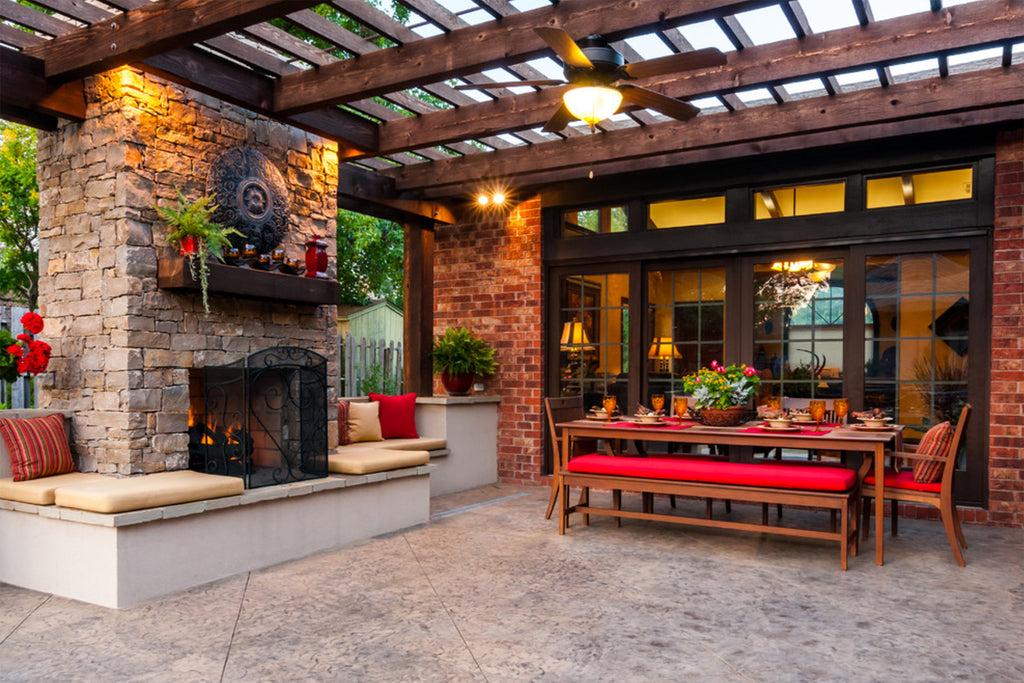Four Ideas for Creating Form and Function Outdoors
 In the past, the backyard has been a relatively utilitarian place, characterized by minimal furniture and rugged decorative elements. Recently, however, the outdoor space has experienced a transformation, turning into an integrated part of the home, and one that combines both form and function when put together correctly. By making the right structural choices and selecting the right furniture and accessories, you can create an outdoor space that serves as a fully functional and beautiful place to relax, entertain, and gather with friends.
In the past, the backyard has been a relatively utilitarian place, characterized by minimal furniture and rugged decorative elements. Recently, however, the outdoor space has experienced a transformation, turning into an integrated part of the home, and one that combines both form and function when put together correctly. By making the right structural choices and selecting the right furniture and accessories, you can create an outdoor space that serves as a fully functional and beautiful place to relax, entertain, and gather with friends.
1. Finding the Right Furniture
Remember the hard metal chairs of yore and the rickety wicker of your childhood? Outdoor furniture today is as lovely and functional as any piece inside your home. You don’t need to eschew beauty and comfort to get a functional piece of furniture for your outdoor area.
For those of you who want a full outdoor “living room”, look for full seating arrangements that combine weather-resistant materials with modern design components. An outdoor L-shaped unit is just as feasible as one for your family room, allowing you to create a communal and relaxing atmosphere for you and your guests. Plus, with weatherproof materials and design elements, you won’t need to worry about the long-term form and function of your outdoor furniture.
The following highlights some of the most prominent structural materials used in outdoor furniture today along with some of their characteristics.
- Aluminum: Does not rust, easily wipes clean, and is lightweight.
- Wrought Iron: Heavyweight for demanding, windy environments.
- Resin Wicker: Easy to clean, weather-resistant, and long-lasting (especially if synthesized).
- Wood: Requires weather treatment but mimics interior furniture well.
The cushions that go with any of these structural materials are typically made from woven acrylic or Dacron, meaning that they are both water-resistant and UV-resistant and can stand up to a wide range of weather. Storing these cushions during the winter and/or harshest weather can help extend the life of your furniture in general.
2. Structuring your Outdoor Space
In the past, getting a bit of “structure” in your outdoor space involved plopping a metal table with the old umbrella in the middle in your space or even using a few planters and an awning to define an area. Today, you have much more dynamic options available to you that give you the functional benefit of coverage along with a way to enhance your space aesthetically. A pergola with a retractable canopy is a great option to consider. This gives you a defined area for your outdoor “room” and the extra level of protection that you and your outdoor accessories need.
3. Creating a Floor Plan
While demarcating a floor plan in an interior is typically a matter of using an area rug, you have much more diverse tools to work within an outdoor space. Creating a floor plan in your outdoor area can involve a mix of materials including stone floors, slatted wood floors, and green spaces. Mix and match, using the contrast between different elements to define specific areas. Structure the rest of your outdoor area’s boundaries with specialty speakers designed with rock exteriors that blend in organically with a rock garden or wall, delivering the ultimate in form and function.
4. Creating a Focus
You can also use outdoor accessories to help structure a space and create a focal point for your area. One choice that delivers big in this respect is an outdoor fireplace. An exterior fireplace with a stone façade can create a natural barrier to one side and provide a gathering point for your family or guests. You can also consider creating an outdoor kitchen with seating around a large countertop as a place to convene. This gives you the form you need with the functionality of a full-service cooking area.
Have you come up with any ideas of your own when it comes to creating form and function in your outdoor space? Let us know in the comments below.




Leave a comment